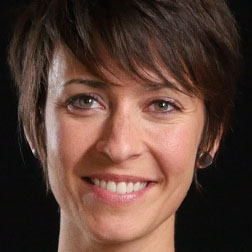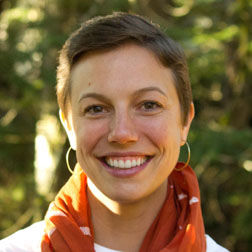“When you can relate to the present moment, make choices and distinctions, and bring those into the collective—that is where the facilitative and the leadership role really meet. When that happens, you’re able to help a group have the capacity to relate to presence and be available to what is emerging. That’s the interface that we’re interested in. That’s where we start to see performance outcomes in organizations, things that are meaningful—greater cohesion, higher performance, more productivity, bigger breakthroughs, and capacity to collaborate across sectors. That’s when we gain greater capacity to work in a multi-stakeholder way with our most difficult-to-solve problems.” – Rebecca Colwell, CEO, Ten Directions
In the midst of a conversation, a meeting, a conflict—what are you available to?
Your team, or the people you’re meeting with right now—how available is this group? And to what?
In your group or organization’s normal habits of functioning, what kind of information and insight is readily available? And what is (kept) out of reach?
Often when we think about the goals and aspirations we have for ourselves and our organizations, we’re likely to think of things like “agility”, “innovation” and “responsiveness.” Sexy goals. Aspirations that embody power, swiftness, capability.
And a lot of people spend a lot of time making assertions about what generates desirable qualities like agility, innovation and responsiveness. Undoubtedly, there are many (some more lasting than others) paths up the mountain.
We value those qualities, too, because when they are present, they usually generate engaged participation and increased well-being—both of which we want to foster more of in the world.
But when we get curious about these desirable qualities, we approach them from a reverse-engineering perspective.
What leads to innovation, creativity, agility, and responsiveness?
To explore a question like that, we prefer to begin with exemplars. Who are our exemplars, and what thinking, behaviors and awarenesses do they display that give rise to their unique way of being?
So when we’re looking at an exemplar—someone who demonstrates agility in their thinking and behaving, nuanced responsiveness to unknown and unpredictable circumstances, creativity inherent in their approach to life—we ask questions like,
“How is his or her awareness attuned to their environment?”
“What are the objects in their awareness that support them to engage this way?”
“What do they see that others don’t see?”
“What habits and behaviors support their way of being?”
This is a fundamentally constructive developmental approach to human and organizational design.
With a constructive developmental mindset, we take it as given that human beings actively and ongoingly construct their experiences of the world, and moreover, that they can participate in shaping this meaning-making process. (We all can, but we do not always do so to the same degree.)
What determines how we are participating in meaning-making is perceptual scope: what we are able to perceive and reflect on. The more aspects of ourselves and our experiences we can discern, the more choice we have about how we are going to relate and respond. And this applies to anything and everything; our emotions, preferences, habits, relationships, etc.
Interestingly, we find in our exemplars that one of the hidden determinants of their perceptual scope is their availability.
And by availability, we are not referring to how much free time you have, or how accessible you are to incoming requests and demands for your time & attention.
In this context, availability means: the quality of openness and spaciousness to perspectives, states of experience, and sources of information. This applies to groups as well as individuals.
Another way of understanding availability is that it’s the “bigness” of your consciousness. Think of yourself as a host of a party, and your consciousness is your home—how big is your home? how many folks can you invite in, receive and entertain?
How big are you? In other words—how much can you take in?
When we are “bigger” and more available, there are fewer constraints on what we’re willing to experience, think, and try on—and we have access to more diverse channels of information.
When we are more available, the number of objects in our awareness increases.
And with more objects in our awareness, we have more choice about how we think, feel and behave.
As an example, imagine for a moment an intact team in a successful organization. This team has a lot of experience, knowledge and motivation. They like to move fast, are excited by creativity, and prefer to leap into action and iterate along the way.
While the team is highly available to novelty, change and chaos, there are other dimensions of experience that they are less available to. These may include things like conflict, boredom, or disappointment.
So while the team’s availability increases for activities like brainstorming and prototyping—which can generate collective states of creative expansion—its availability to experience conflict or boredom shrinks when these states show up. Yet conflict, boredom and disappointment arise naturally and present new sources of information for the team.
In conflict there is creative potential. What insights emerge when we stay with or even heighten the dissonance between two perspectives?
In boredom, desire lurks. Where is our boredom coming from? What habits or practices are we tired of?
The team who brushes boredom or conflict under the rug isn’t likely to find out.
If the team isn’t available to states of boredom or conflict, then it will likely avoid coming into contact with these states—which means missing out on the information and insight these experiences have to offer.
Just the same with individuals; if an individual in the team is not available to their own feelings of dissatisfaction, then they can’t effectively recognize, let alone utilize, the creative insights that their disappointment may have to offer the rest of the team.
Availability is a pre-condition for all of the other, “sexier,” qualities we desire more of in ourselves and our organizations. Things like “innovation” and “responsiveness” and “agility.”
By asking questions about our inner availability, we can start to uncover the types of closure and constraint that we are bringing—often invisibly—to our life and work. And by inquiring into the collective availability of our teams and organizations, we can start to see trends in group culture, habits and process that may reveal untapped sources of information and insight.
Notice availability—your own, and your group’s. Starting with a simple inner question “What am I / are we available to?” and “What am I / are we not available to?” can generate helpful insights.
When we expand our inner availability, we increase our access to information—and improve our ability to be a highly-tuned receptive sensor for creative emergence.
When a team or organization becomes more available to new ways of thinking, being and doing, it increases it’s range of motion and becomes more capable. As a result, agility, responsiveness, creativity and innovation more quickly and naturally emerge.
Lauren Tenney
Director of Program Development and Editor of the Ten Directions blog.





5 thoughts on “Availability—Inviting the “bigness” of you”
Hi and thanks for this great post. I,m so glad you included the other side of the coin, those things we don’t want or like to admit are happening because they can stop process dead in their tracks when unaknowledged. . I would be inspired by this to note on my white board, the words, boredom, disappointment and conflict as energies to be on the ready for in a group process just because they can be so fruitful. These are Kegen,s immunity to change factors and when not aknowledged, they drain energy. We are addicted to the bright side, the sexy, the fast and yet real treasure lies in what we want to avoid at all cost. Hahahaha. Easy to describe, harder to do. Thanks again.
Thanks Rebecca. Yes, it’s easy and tempting to problematize “the other side of the coin” as you put it. Absolutely true re: “easy to describe, hard to do.” Practicing in a culture of curiosity is such a tremendously valuable opportunity. Thank you for sharing your response.
Very interesting and pertinent in that I always want to build capacity but availability nudges in the direction of action and interaction. Lovely distinction. Thanks!
Love that recognition of how “availability nudges” in the direction of action and interaction. Interesting though, as Diane often reminds, how much energy and action arises as soon as we point out the obvious truth that we’re bored, for instance! Thanks for engaging, Terry.
Hi Lauren! I love this! Availability is one of the qualities/practices I am turning toward and witnessing – thanks to Diane and Rob’s On Devotion course. Warmly, Vic